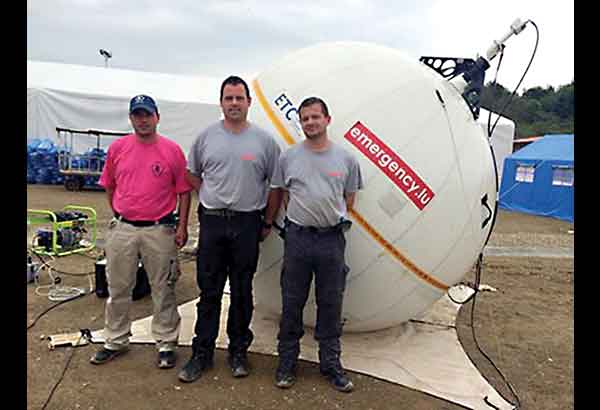Self-driving cars to help with traffic woes
Traffic congestion continues to get worse as the number of cars keep increasing while transport infrastructure is still in a catch-up mode. The horrific situation is aggravated by accidents mostly due to undisciplined, drunk or unskilled drivers who wreak havoc on the road. Nevertheless, Filipinos are hopeful that chaos on the roads and accidents will be prevented with the advent of intelligent or self-driving vehicles that could “take over” when for some reason, the driver’s reflexes become slow or he is not in a position to make sound or safe decisions on the road.
While the idea may sound very futuristic, some car manufacturing industry insiders tell us that the idea of self-driving cars are no longer so farfetched as a lot of carmakers – both European and Asian – have been collaborating with tech companies to manufacture driverless cars. Mercedes, BMW, Tesla have either released or will soon release these intelligent models and even Google has announced that it would be testing a prototype by next year.
According to a report from the BI Intelligence, some 10 million self-driving cars – defined as any vehicle with “features that allow it to accelerate, brake or steer a car’s course with limited or no driver interaction” – with any one of the aforementioned features will hit the road in five years. Tesla has deployed its autopilot system while Google says it would have self-driving cars by 2020.
At the recent Tokyo Motor Show, Japanese auto manufacturers showcased some models packed with technology such as radars, Global Positioning System, sensors and cameras, allowing cars to shift gears or change lanes on their own and prevent accidents and collisions on the road.
Nissan for instance is developing the IDS – Intelligent Driving Solution – wherein a person’s driving preferences can be inputted in the car’s computer, which will then be set in autonomous mode. Toyota showcased a Lexus GX that could navigate expressways and ramps by itself, with the vehicle able to assess whether it should slow down or speed up depending on the volume of vehicles and its assessment of the traffic around it. Plus, it will also communicate when the car should return to manual mode for the driver to take over – all with a simple tap on the screen. Honda on the other hand exhibited a vehicle that could go on auto-cruise mode at below 65 kph on congested roads.
While western manufacturers are more aggressive with their predictions and are roaring to get the cars on the road by 2020 (with corresponding disclaimers that drivers have to keep their hands on the wheel), the Japanese carmakers are more cautious, saying their target is 2025. Japan though is looking at the upcoming Tokyo Olympics in 2020 to highlight their driving technology prowess by bringing athletes to the competition venues in “robot taxis.”
According to BI Intelligence, one of the biggest benefits of the self-driving cars (classified into the semi-autonomous and the fully autonomous that does not require any driver interaction form the driver as it navigates to a pre-set destination) is that they can help make roads safer for people. Some cars fitted with 360-degree sensors and cameras can detect when a speeding car is approaching or a human suddenly crosses the road, and can put on the brakes or change direction to avoid collision. In Japan, accidents involving seniors are going up, which is why a big number of cars sold are now equipped with features that will help the driver avoid collisions.
As noted by an executive of the Japan Automobile Manufacturers Association, automated cars can go a long way in helping ease congestion and reducing accidents on the road. While it may take longer for these intelligent cars to be rolled out in the Philippines, hope springs eternal among many senior Filipinos that they will still be around when that happens.
Luxembourg’s emergency.lu disaster communication platform

The Philippines is one of the most vulnerable countries when it comes to natural calamities and disasters, and climate change has made us even more vulnerable to disaster. To this day, many victims of Typhoon Yolanda have not fully recovered from the aftermath of the killer typhoon whose devastation moved the international community to come to our aid.
During disasters, a major challenge for rescue, recovery and relief operations is poor (or sometimes non-existent) communications especially when local telecommunication infrastructures are damaged, wiping out reliable mobile or Internet communications. This hampers relief efforts because rescuers and volunteers could not pass on situation reports that would help in the deployment of food and relief items, and the dispatch of medical teams as well as search and rescue groups in areas where they are needed most.
In 2012, the government of Luxembourg primarily through the Ministry of Foreign Affairs and its technology/aerospace industry partners developed a unique communications platform designed for international aid and rescue operations. Called the emergency.lu, this satellite based telecommunications platform can be rapidly deployed and set up within 24 hours in remote areas during emergency situations or when natural disasters strike.
In fact, when typhoon Yolanda hit the country in 2013, a team from emergency.lu was immediately dispatched to Tacloban, and upon arrival immediately set up their own power generators on the roof of the highest building that remained standing. In 40 minutes, the telecommunications network became operational – and emergency.lu became the communications provider for all aid agencies that arrived in Tacloban – providing connectivity to over 300 groups and more than 5,000 aid and relief volunteers across Leyte. During the earthquake in Nepal, emergency.lu volunteers (seen in photo beside an emergency.lu antenna) were also deployed – helping save lives in the process.
***
Email: [email protected].
- Latest
- Trending































